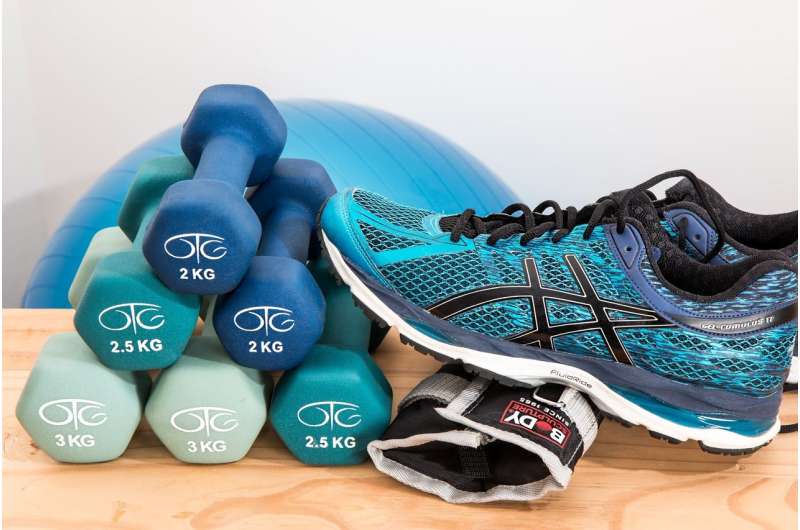Credit: CC0 Public Domain
Getting to the gym is hard enough, but when it comes to working out, the stereotypes about men and women you pack along with your water bottle can be far more difficult to overcome than any treadmill or barbell.
"Geographers often look at neighbourhood environments when we look at physical activity. We often think about built environments in terms of how streets are designed and how walkable things are. But they don't often think about gender," explained Stephanie Coen, postdoctoral associate in Geography. "I was interested in taking a much more micro-level perspective in thinking about the environments where we actually pursue physical activities, and if they play a role in how gender differences take shape.
"Gyms provide opportunities for physical activity participation and for health-enhancing behaviours. But at the same time, they often reinforce gender differences and disparities."
For her study, Coen interviewed 52 gym-goers of both genders from the same city. She asked each to keep a journal of their interactions in the gym. For her final interview question, Coen asked participants to draw an image to describe their experience.
She hoped that taking a creative approach would help participants look at their experience from a different perspective. What she noticed in the responses were some commonalties.
The participants shared there was both a "real and perceived threat for not conforming to stereotyped activities." So much so, men and women would 'self-police' to stay in the confines of what was perceived to be 'normal' for their gender.
For example, some of the male participants told her they had an interest in using specific gym equipment but because it was thought of as 'feminine,' they avoided using it.
"A man told me he was subject to a homophobic comment from someone because he and a group of other male friends were doing a circuit training that wasn't as male normative as some other activities," Coen said.
From her female participants, she heard it was more a matter of taking up space in the gym that was problematic for them.
"There are some gender patterns happening around how men and women use and consume 'space' in the gym. Both genders have this idea that men take up more space, both physically and sonically (what you can hear). Both men and women experienced that," she said.
"What was so imbedded in the environment of the gym was a lot of women talked about ways they would minimize their consumption of time and space in a way they didn't want to 'get in the way of someone else.'"
"A young woman told me she couldn't be authoritative in asserting her place and using the equipment because she might be perceived negativity. But she felt like if a man were to do that, it would be acceptable. It shaped how she engaged with the equipment in the gym."
While some might think the solution to these gender dynamics is creating more women-only gyms, Coen doesn't agree.
"If we really want to try to intervene and change the gender interplay in the gym, then separating men and women leaves those gender relations as status quo," she explained.
"This is an example where it's really important to look more critically at these kind of everyday places that seem so ordinary. It was in the minute perceptions and glances people had about what other people around them were doing and how they were being perceived that influenced how they felt," she said.
Coen hopes her research is the beginning of a conversation. Once gender dynamics in the gym are brought to light, she explained, it could spark change.
"If I pointed out that a whole group of women are unwittingly forfeiting some space in the gym, I think people would be like, 'I didn't realize that was happening and I'm going to claim my space,'" she said.
"We need to think about how can we change gender relations in places like the gym that help make them more inclusive spaces. In particular, we don't want to just paint certain types of men as the bad guys in the gym. We have to be careful we don't inadvertently stigmatize a group of people or blame a group of people. We all need change," she said.
Coen's article, "It's gym, like g-y-m not J-i-m": Exploring the role of place in the gendering of physical activity, was recently published in the January 2018 edition of Social Science & Medicine.
More information: Stephanie E. Coen et al. "It's gym, like g-y-m not J-i-m": Exploring the role of place in the gendering of physical activity, Social Science & Medicine (2017). DOI: 10.1016/j.socscimed.2017.10.036
Journal information: Social Science & Medicine
Provided by University of Western Ontario























